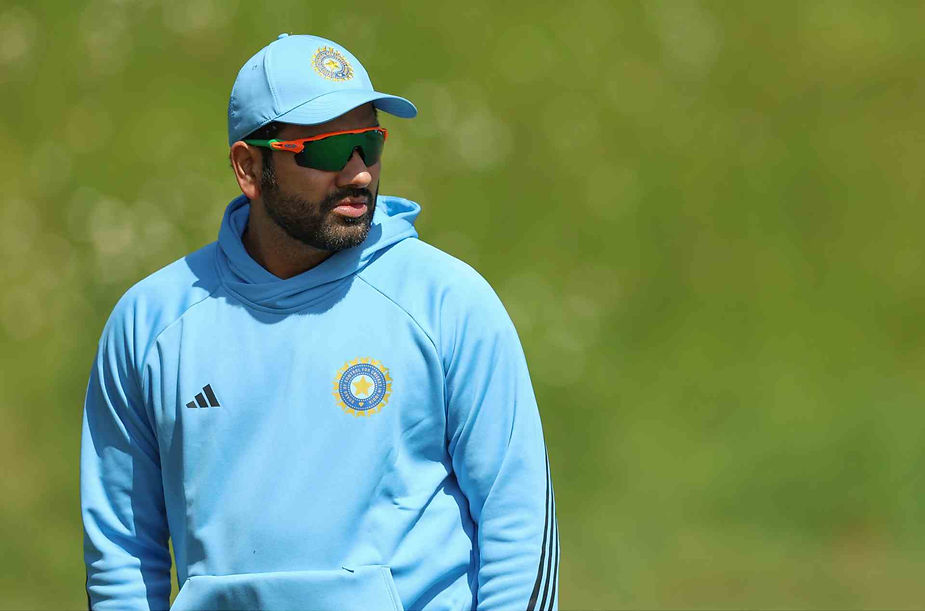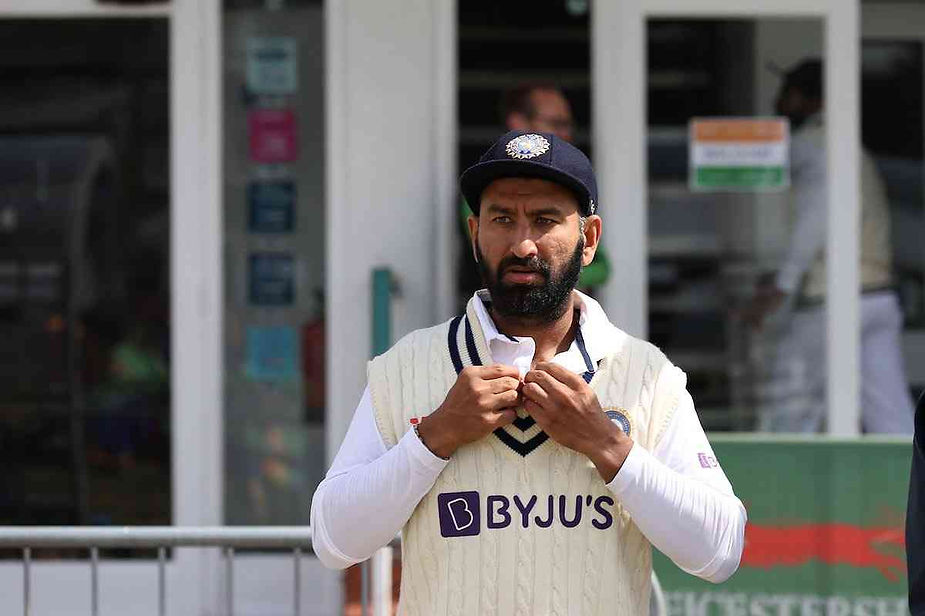India have lost two back-to-back WTC Finals, do Team India need a complete overhaul?

Heads! Called India’s captain, Rohit Sharma, and the crowd went berserk as India won the toss in the all-important WTC Final against Australia and Rohit decided to bowl first on a tricky wicket with grass cover and cloudy weather was forecasted on the fourth day’s play.
The team sheets were exchanged, and well, well, well, the No.1 ranked bowler in Tests was dropped! Yes, Ravichandran Ashwin had been benched, despite five left-handers in Australia’s top 8. India ended up losing the match by 209 runs, thanks to a whirlwind 163 off 174 balls from Travis Head in the first innings and irresponsible cricket from India’s batting department, which isn’t news anymore as this has been the case for the past five years.
Two finals! Two different captains, two different coaches – One Result!
Does that ring any bell for the Indian supporters? Well, such comical team selection and strategic errors have been India’s story for the kazillionth time in ICC trophies now, and for the nth time, India have again been defeated in an ICC event after performing on top of their game throughout the qualifying stages.
Similar was the case in WTC 2021 finals, where Virat Kohli went ahead with two spinners when the forecast was cloudy for all five days of play, and Rohit Sharma thought of not repeating the same mistake but ended up making effectively the same error. And both the captains and the coaches didn’t read the pitch nor the weather forecasts before selecting the eleven. Whether it has been a ‘3D’ player’s sudden inclusion in a World Cup squad, the captain hanging his captaincy boots after an ICC event, or the sacking of multiple chief selectors and administrators, the Indian team and BCCI have been in the news for all the wrong reasons.
Read More: WTC Final 2023, Day 5, Aus vs Ind: India lose 2nd consecutive WTC Final; Aus win coveted Test mace

Lack of long-term vision and strategic planning is affecting India
India’s most successful Test captain Virat Kohli, who has built the current Indian Test team, has been known for selection blunders, and the critics looked at Rohit Sharma as the next captain to end India’s drought of ICC trophies. However, that wasn’t the case this time either, as India ended up losing a rather one-sided game to Australia at The Oval. It’s now been two different sets of captain and coach combinations, Virat-Shastri and Rohit-Dravid, and neither have been able to bring glory to India so far. The sheer Indian fan asks a very silly question: Was India ever prepared to beat Australia? And an honest answer to that would be “a big no,” just like the big fat biddings in the IPL.
India played a total of 18 matches in the 2021–2023 WTC cycle, winning 10, losing 5 and drawing three games to end up with a win percentage of 55.56. India lost two home games and three away games in this important cycle, and ever since Virat Kohli stepped down in the middle of the South African tour, India have looked clueless and underprepared. They had no backups. India’s team management threw the hat to KL Rahul in Rohit’s absence, and when both KL and Rohit were injured, India were like a fish blown out of water, baffled! The pattern continued: a series of irrational and short-term strategies followed as Jasprit Bumrah was appointed as India’s Test captain for the rescheduled fifth Test of Pataudi Trophy 2021 in Birmingham, and Bumrah’s inexperience in leading a team was on display on live television for five days. This blew away the chance of winning a Test series in England after 15 years!
Read More: Top order failure, wrong selection, timid approach behind India’s consecutive WTC final defeats
Has the management learnt its lessons? Do India still have an answer?
A good team management learns from their mistakes, and if any Indian fans think that this team management has rectified their mistake, the answer still remains a big fat no! India do not have any backup captains in red-ball cricket, and given the next WTC finals will be in 2025, Rohit Sharma, being 36 years old, for sure wouldn’t be a part of this team; forget leading the team if at all India make it to their third WTC finals. It’s not just Rohit who is ageing; Cheteshwar Pujara (35 years old), Virat Kohli (34 years old) and Ajinkya Rahane (35 years old), India’s middle order, to say the least, for the past 10 years, are already in the twilight of their careers.
In the bowling department which is led by Ravichandran Ashwin (36 years old), Ravindra Jadeja (34 years old), Umesh Yadav (35 years old), and Mohammed Shami (32 years old), who have been India’s mitochondria in the bowling department, they have bruised their knees and shoulders bowling for the past 10 years. In fact, six of India’s players who featured in the WTC Final 2023 are already above 33 years of age (54.5 per cent of the starting eleven) and way past their prime for them to be considered for the next WTC cycle. By the time the team reaches the second half of 2024, 80 per cent of them will have either retired or will be headlining the newspapers ‘Finished?’ taglines.
Read More: India desperately need genuine fast bowling all-rounder to compete well in ICC events

Compromising long-term vision for short-term team goals? Is Indian team management afraid of failure?
Now the question of the decade would be, “Do we not have talented red-ball players up the ranks? Or, is the management afraid of failure?” While the latter seems to be the right fit for India’s performances in the recent past, it doesn’t truly justify the situation. While India sends a young and fresh-looking squad every time to the touring nation with the India A team, none of the performing players in the India A matches actually get converted to India’s setup. The management has been gimmicking with India A tours before every series, and players like Abhimanyu Eshwaran, Yashasvi Jaiswal, Mukesh Kumar, Ruturaj Gaikwad and Rajat Patidar, to name a few, have been bamboozling the opponents in practice matches only to make way for the senior pros when the actual series begins.
India, being a land of spinners, has not given any chances to a single player who can replace Ravichandran Ashwin, if at all the current No.1 ranked bowler decides to hang his boots in the next two years. If at all they look at an off-spinner replacement, they take a step backwards towards the ageing Jayant Yadav to bail them out. It’s not just Ashwin’s backup, for whom India haven’t prepared or given enough chances to youngsters. Even in the pace battery, there hasn’t been even a single fast bowler who has debuted for India in Test matches since the 2020-21 Australia series, where India were forced to look at youngsters after half the squad was hit with injuries or COVID-19. And as they say, the rest is history – what happened was India’s historic 2-1 series win in Australia in 2020–21.
Thangarasu Natarajan was the last Indian fast bowler to make his debut for India way back on January 21. If we dig deeper, the numbers are ridiculous. In the past 10 years, since the 2013–14 West Indies tour of India, the iconic farewell series of Sachin Tendulkar, India have had only five new pacers. Yes, a mind-boggling five out-and-out fast bowlers have debuted for India in Test matches. Shows the lack of opportunity or the unstructured conversion of domestic talent into international teams. While the leaders in cricket, England and Australia, are looking ahead into the future, India have been taking a step backward by always going towards old legs to fill in for a replacement player.
England and Australia have a good mix of experience and youth in their elevens, where the knowledge sharing can be seen in the moulding of the youngsters, be it Steven Smith (34 years old) preparing Marnus Labuschagne (28 years old) or Stuart Broad (36 years old) or James Anderson (40 years old) preparing someone like Ollie Robinson (29 years old) to lead the charge.
Read More: BGT 2023, IND v AUS, 4th Test, Day 5: Match drawn; India win BGT & qualify for WTC 2021-23 Final
India’s draining schedule for the 2025 WTC cycle and the importance of workload management
As it has been the case always, England (21), Australia (19), and India (19), or as the media call it, “The Big Three” are going to play the highest number of matches in the 2025 WTC cycle, with the finals planned at the home of cricket, Lord’s, in 2025.
India will play three home series (England, Bangladesh and New Zealand) and three away series (West Indies, South Africa and Australia) in the next two years in an attempt to reach the finals for the third straight cycle. Given the hectic schedules of international white-ball cricket and the money-minting IPL, which seems to be the priority for BCCI, managing players for Test cricket has been a concern.
With the likes of Jasprit Bumrah, Shreyas Iyer, KL Rahul and Rohit Sharma being permanent residents of the National Cricket Academy (NCA) in Bengaluru, the wear and tear of a busy schedule is reflecting on the players. If it wasn’t already, it’s definitely high time now for India to consider two different teams for white ball and red ball. With Hardik Pandya expected to lead in T20Is going forward, he is expected to break free from the bandwagon and lead a fresh team in T20Is, and if the positive pattern follows, we might see some fresh blood in the 2025 WTC cycle for India donning the white jerseys.
Read More: Does BCCI need to look into scheduling keeping ICC tournaments in mind?
Tags:

